
Toulon is a city on the French Riviera, famous for its 1793 siege, and a large port on the Mediterranean coast, with a major naval base. Located in the Provence-Alpes-Côte d'Azur region, and the Provence province, Toulon is the prefecture of the Var department.

Saint-Malo is a historic French port in Ille-et-Vilaine, Brittany.

The Fortress of Louisbourg is a tourist attraction as a National Historic Site and the location of a one-quarter partial reconstruction of an 18th-century French fortress at Louisbourg on Cape Breton Island, Nova Scotia. Its two sieges, especially that of 1758, were turning points in the Anglo-French struggle for what today is Canada.

Notre-Dame de la Garde, known to local citizens as la Bonne Mère, is a Catholic basilica in Marseille and the city's best-known symbol. The site of a popular Assumption Day pilgrimage, it is the most visited site in Marseille. It was built on the foundations of an ancient fort at the highest natural point in Marseille, a 149 m (489 ft) limestone outcropping on the south side of the Old Port of Marseille.

The Château de Vincennes is a former fortress and royal residence next to the town of Vincennes, on the eastern edge of Paris, alongside the Bois de Vincennes. It was largely built between 1361 and 1369, and was a preferred residence, after the Palais de la Cité, of French kings in the 14th to 16th century. It is particularly known for its "donjon" or keep, a fortified central tower, the tallest in Europe, built in the 14th century, and for the chapel, Sainte-Chapelle de Vincennes, begun in 1379 but not completed until 1552, which is an exceptional example of Flamboyant Gothic architecture. Because of its fortifications, the château was often used as a royal sanctuary in times of trouble, and later as a prison and military headquarters. The chapel was listed as an historic monument in 1853, and the keep was listed in 1913. Most of the building is now open to the public.

Bergues is a commune in the Nord department in northern France.
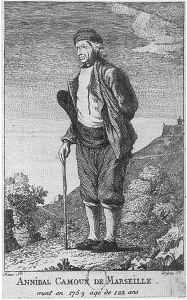
Annibal Camoux was a former French soldier from Marseilles who was noted for his longevity. Most researchers, including French historian Louis Thibaux, consider this an unverified longevity claim.

Elizabeth Castle is a castle and tourist attraction, on a tidal island within the parish of Saint Helier, Jersey. Construction was started in the 16th century when the power of the cannon meant that the existing stronghold at Mont Orgueil was insufficient to defend the Island and the port of St Helier was vulnerable to attack by ships armed with cannons.

The Marseille roundup was the systematic deportation of the Jews of Marseille in the Old Port between 22 and 24 January 1943 under the Vichy regime during the German occupation of France. Assisted by the French police, directed by René Bousquet, the Germans organized a raid to arrest Jews. The police checked the identity documents of 40,000 people, and the operation sent 2,000 Jews first to Fréjus, then to the camp of Royallieu near Compiègne, in the Northern Zone of France, and then to Drancy internment camp, last stop before the extermination camps. The operation also encompassed the expulsion of an entire neighborhood before its destruction. Located in the Old Port, the 1st arrondissement was considered by the Germans to be a "terrorist nest" because of its small, windy and curvy streets For this occasion, SS leader Carl Oberg, in charge of the German Police in France, made the trip from Paris, and transmitted to Bousquet orders directly received from Himmler. It is a notable case of the French police's collaboration with the German occupiers.

The Marseille History Museum is the local historical and archaeological museum of Marseille in France. When opened in 1983, it became one of the most significant museums for urban history in France, dedicated to exhibiting the major archaeological finds discovered after the site was excavated in 1967; at the same time the property was redeveloped commercially and the Centre Bourse shopping arcade constructed. The museum building is entered from within the centre, and opens out onto the "Jardin des Vestiges", an outdoor garden containing the stabilised archaeological remains; it includes classical ramparts, port buildings, and a necropolis.

The Old Port of Marseille is at the end of the Canebière, the major street of Marseille. It has been the natural harbour of the city since antiquity and is now the main popular place in Marseille. It became mainly pedestrian in 2013.
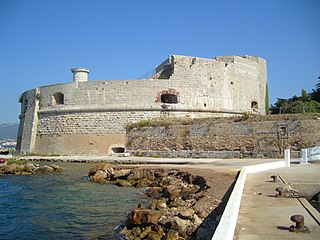
The Tour Royale is a fort built in the 16th century to protect the entrance of the Petit Rade, the naval port of Toulon. It was the first fortification of the harbor, built 22 years after Provence became a part of France.
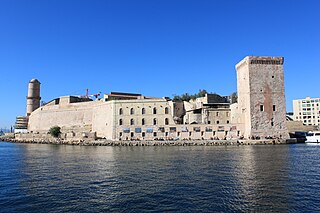
Fort Saint-Jean is a fortification in Marseille, built in 1660 by Louis XIV at the entrance to the Old Port. Since 2013, it has been linked by two foot-bridges to the historical district Le Panier and to the Museum of European and Mediterranean Civilisations; the latter being the first French national museum to be located outside Paris.

The military port of Toulon is the principal base of the French Navy and the largest naval base in the Mediterranean, situated in the city of Toulon. It holds most of France's force d'action navale, comprising the aircraft carrier Charles de Gaulle as well as its nuclear attack submarines, in total, the base contains more than 60% of the French Navy's tonnage, and about 20,000 military and civilian personnel work at the base.

The Museum of European and Mediterranean Civilizations is a national museum located in Marseille, France. It was inaugurated on 7 June 2013 as part of Marseille-Provence 2013, a year when Marseille was designated as the European Capital of Culture. In 2015, it won the Council of Europe Museum Prize.

Marseille or Marseilles is a city in southern France, the prefecture of the department of Bouches-du-Rhône and of the Provence-Alpes-Côte d'Azur region. Situated in the Provence region, it is located on the coast of the Mediterranean Sea, near the mouth of the Rhône river. Marseille is the second-most populous city in France, after Paris, with 873,076 inhabitants in 2021. Marseille with its suburbs and exurbs create the Aix-Marseille-Provence Metropolis, with a population of 1,911,311 at the 2021 census.

The Battle of Marseille was an urban battle of World War II that took place August 21–28, 1944, and led to the liberation of Marseille by Free French forces under the command of General Jean de Lattre de Tassigny. The groundwork was laid by the Allied invasion of southern France in Operation Dragoon on 15 August 1944 by the United States Seventh Army, with major support from the French First Army.

The Battle of Toulon was an urban battle of World War II in southern France that took place August 20–26, 1944 and led to the liberation of Toulon by Free French forces under the command of General Edgard de Larminat.
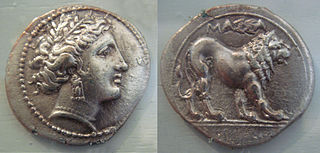
Marseille, France was originally founded circa 600 BC as the Greek colony of Massalia and populated by Greeks from Phocaea. It became the preeminent Greek polis in the Hellenized region of southern Gaul. The city-state allied with the Roman Republic against Carthage during the Second Punic War, retaining its independence and commercial empire throughout the western Mediterranean even as Rome expanded into Western Europe and North Africa. However, the city lost its independence following the Roman Siege of Massilia in 49 BC, during Caesar's Civil War, in which Massalia sided with the exiled faction at war with Julius Caesar.
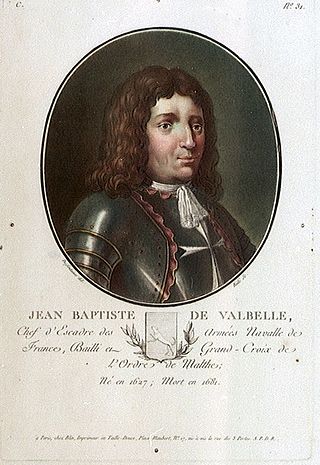
Jean-Baptiste de Valbelle was a French naval officer, descended from a prominent naval family of Marseille. He is known for his role as commander of a squadron of French ships during the Franco-Dutch War of 1672–78.




















